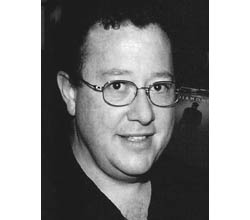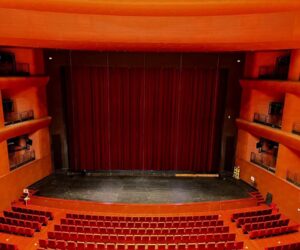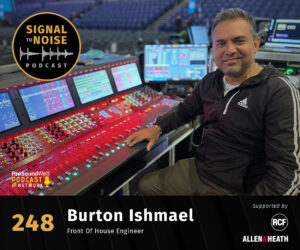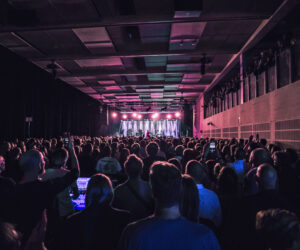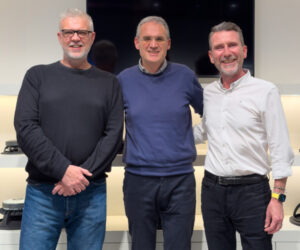Bernie Becker began working with Neil Diamond in the early 1990s as a recording engineer, and subsequently, Diamond and Stan Miller, Neil’s longtime sound designer, asked Becker to join them on tour.
The studio engineer brought a unique perspective to live sound, including a felt need to regulate all of their digital gear with a master clock.
“Live sound engineers shy away from word clock because it’s one more box to haul around and necessitates a lot of cable interconnects,” explains Becker.“They’re always looking for ways to set up faster and more reliably. They see word clock as moving in the wrong direction.”
However, Becker argues persuasively that obvious improvements in fidelity and “solidness” make the extra setup time more than worthwhile.
For Diamond’s 2008 tour, Becker and his peers traveled with ten Yamaha eight-channel AD8HR digital mic preamps on stage, two Yamaha PM5D digital consoles, additional processing by Yamaha, Dolby/Lake and Aviom. (The main PA had JBL VerTec line arrays driven by Crown amplifiers.)
To keep all of that digital signal in synch, they used two Lucid Audio GENx192 ultra-low jitter studio master clocks. The mic preamps, the console, miscellaneous outboard digital effects, and the digital loudspeaker manager all received word clock from the GENx192s.
Part of Becker’s duties, and some might say part of his obsession, involves “proving” all of the tour’s equipment in his Pasadena mastering studio. “You can really hear the nuances that add up to big qualitative differences, and we’ve proven everything from mic pres to cabling,” he states. “It’s difficult to express in words, but different word clocks have different ‘sounds.’ I don’t think anyone would characterize the sound of the higher-end clocks, including the Lucid, as necessarily good or bad… just different, akin to the qualitative differences you might hear among high-end mic pres.”
Nevertheless, two factors contributed to the tour’s long-standing reliance on the Lucid GENx192s.
First, the Lucid has, in Becker’s estimation, a “generic-ness” that’s missing from other clocks. “I won’t pretend to explain why,” he says, “and the engineers would probably tell me it’s impossible, but the GENx192 seems to work nicely with gear from any other manufacturer. Everything improves by locking to it. With other clocks, some gear seems to improve and some doesn’t.”
Second, the Lucid GENx192 has proven itself road-worthy. “We shook a lot of other clocks apart, literally,” Becker laughed. “The GENx192 is rock-solid and has worked without fail night after night after night.”
Despite Becker’s insistence, many of the sound professionals who either traveled with the tour or helped set it up thought the clock was just dead weight. “A lot of those guys just said, ‘Bernie’s crazy,’ which I am, especially about sound,” he admits. “But there’s nothing like a true A/B test to settle matters. Without doing a true A/B, it’s easy to fool yourself into thinking things that aren’t true. Points of reference change.”
So Becker took his naysayers head-on. They had a recording of every mic and the capacity to play back a “virtual” show. He switched back-and-forth between simply slaving each piece of gear to their AES input signal and using the Lucid GENx192 word clock.
“It’s one thing to hear a difference in a quiet control room, but to hear it in a big, noisy arena, that’s something else,” Becker says. “It was obvious to everyone present that in a blind A/B, the clocked audio had less digital harshness, greater imaging, and greater depth of field. It was not subtle. It was no longer up for debate.”
Becker summarizes, “Our Lucid GENx192s are absolutely road-worthy and make Neil’s live sound qualitatively better. For just a few more cable interconnects, the musicians can tell the difference. Many don’t necessarily claim that it sounds better, but rather that it feels more solid, like they’re more connected to their instruments. For just a few more cable interconnects, the audience gets a better show.”


